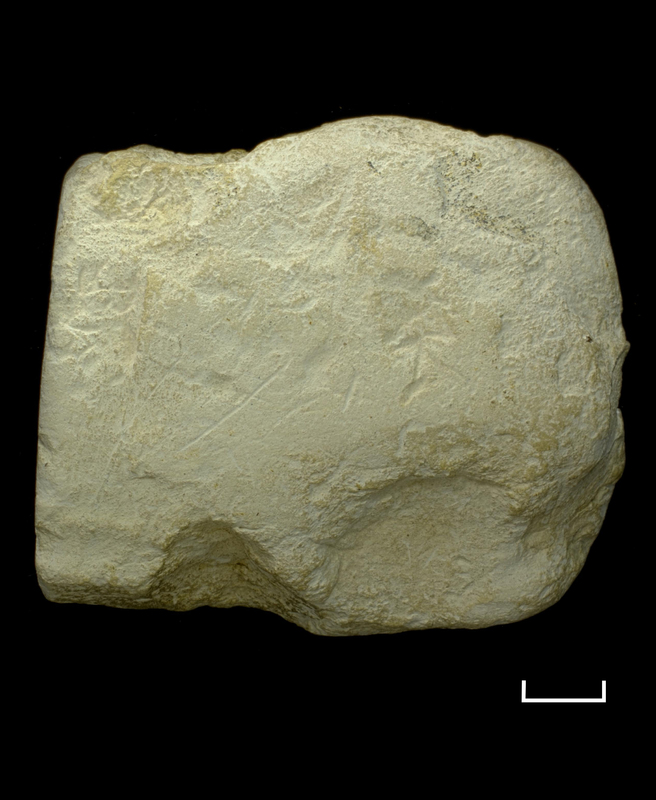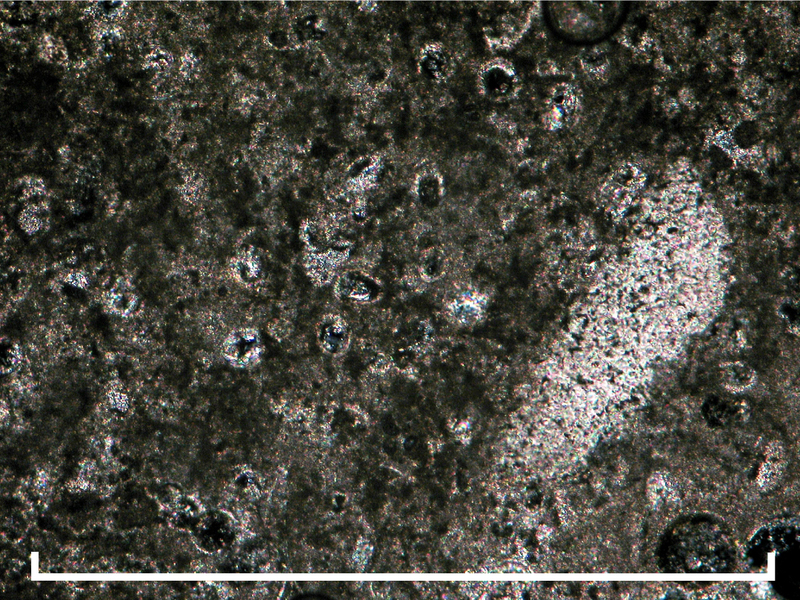- Home
- Rocks
- Type fossils
- Fossil Specimens
- Minerals
- Glossary
- Stratigraphic Chart
- Michel-Levy Chart
- Classification of igneous rocks
- University of Cambridge
- Department of Earth Sciences
- ESC Library
- Moodle
- Sedgwick Museum
- DoITPoMS
- Mindat.org
- Microfossils
- Bryozoans
- Webmineral
- Tree of Life
- CrystalMaker
- Virtual Microscope
L351 Limestone, mudstone, micrite, chalk
Title
L351
Limestone, mudstone, micrite, chalk
Subject
Age
Upper Cretaceous
Location
Melbourn, Cambridge
Description
Hand Specimen
This white rock is virtually pure carbonate. It fizzes with acid. It is fine-grained and poorly cemented, making it soft and low density. It is commonly known as ‘chalk’.
Thin-section
Very uniform cryptocrystalline carbonate.
Rare larger calcite crystals <0.5mm.
Rock History
Very fine-grained, so deposited in a very low energy environment.
Such fine carbonate could have been produced in one of two ways:
1. Tests of calcitic plankton.
2. Very finely ground shell fragments. Currents alone could not grind the shells this finely. This would require bioerosion – e.g. fish ingesting organisms with carbonate shells, and grinding the carbonate to a fine powder.
Such fine carbonate could have been produced in one of two ways:
1. Tests of calcitic plankton.
2. Very finely ground shell fragments. Currents alone could not grind the shells this finely. This would require bioerosion – e.g. fish ingesting organisms with carbonate shells, and grinding the carbonate to a fine powder.
Rock Name
limestone
mustone
micrite
chalk
mustone
micrite
chalk
Citation
“L351
Limestone, mudstone, micrite, chalk,” 1A Collections, accessed April 9, 2024, https://wserv3.esc.cam.ac.uk/p1acollections/items/show/30.
Limestone, mudstone, micrite, chalk,” 1A Collections, accessed April 9, 2024, https://wserv3.esc.cam.ac.uk/p1acollections/items/show/30.



